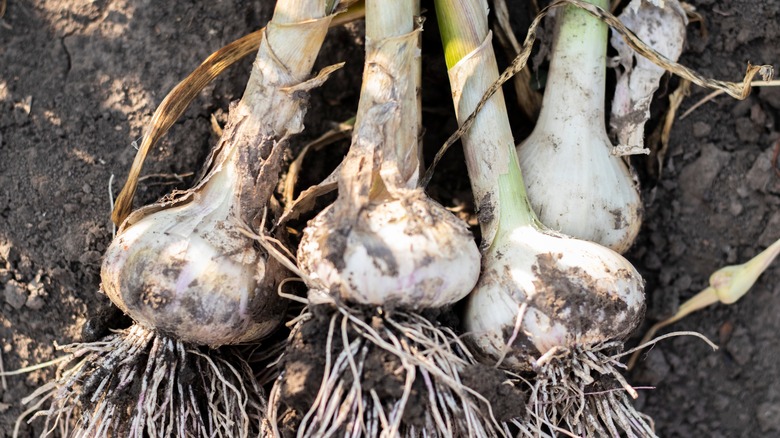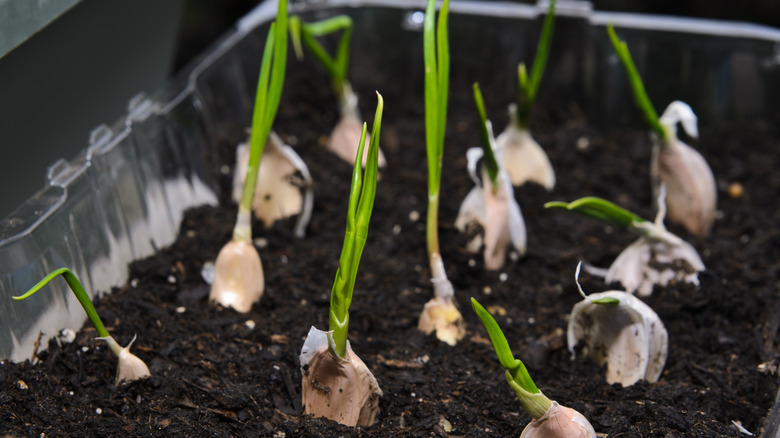Everything You Need To Know To Water Your Garlic
Getting the right water balance for successfully growing garlic is like mastering a tricky dance routine. It's important to keep an eye on its water needs at different stages of its life. First, when you plant it in the fall, make sure to give it a good soaking to help those roots get established. During the winter, garlic goes into deep sleep mode, which means it doesn't need much water. That is, unless the area you live in is particularly dry. When spring arrives, your garlic buddies will start to wake up and begin growing, so they'll need a drink about once a week, or whenever the top layer of soil feels dry.
By late spring and early summer, baby garlic bulbs will begin to start forming, so don't stray from your weekly watering schedule. When you're about two weeks away from harvesting your garlic, cease and desist on all watering. You want to let the soil dry out a bit before gently removing them from the earth. You'll know it's time to harvest when the green tops are still hanging around, but the lower leaves are starting to turn brown.
Keep it balanced
Like most other plants, this pungent bulbous vegetable requires consistent watering, but not excessive. Overwatering can lead to waterlogged soil, which can increase the risk of fungal disease and rotting. Not watering enough can stress the plant out, which can cause it to shrivel up and die. That's why it's important to find the sweet spot where the soil remains consistently moist but not too soggy. Garlic roots don't grow too deep, so if the soil around the stem of the plant looks dry, don't wait until it resembles a parched desert landscape. Give it a thorough drink, but not enough to make it look like a flash flood just came through. Garlic generally needs about an inch of water per week, either from rain or from the hose.
Remember, too, that different soils have different thirst levels. Garlic likes to live in well-draining soil that still has the ability to hold moisture. So if you're planting in clay or sand, you might need to give it a nutrient boost and help its texture by tossing in some compost during the spring or autumn. Lastly, water your garlic in the morning to allow the leaves to dry before the evening chill sets in. This will keep your little garlic buddies happy and healthy.

